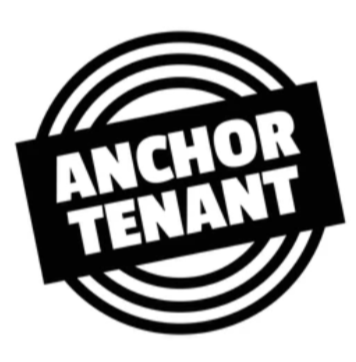What is an anchor tenant? An anchor tenant is a large, well-known retail or commercial tenant that serves as a primary draw for customers, thereby enhancing foot traffic and revenue for the surrounding businesses in a shopping center or mall. Understanding key concepts can significantly impact success in the dynamic realm of retail and commercial real estate. One such crucial concept is “What is an anchor tenant?” These major retail or commercial tenants play a pivotal role in the dynamics of shopping centers and malls.
By exploring “What Is an Anchor Tenant,” we can uncover how they attract substantial foot traffic and boost overall revenue for the surrounding businesses. Read on as we delve into the importance of anchor tenants and how their presence can elevate a commercial property’s performance.
Real estate investors like Steve Daria and Joleigh have long recognized the value of securing anchor tenants for their properties. These major tenants, often well-known retail chains, are critical in driving consistent foot traffic to shopping centers and malls. By attracting a steady stream of customers, anchor tenants help increase revenue not just for themselves but for all nearby businesses.
What Is an Anchor Tenant?
What is an anchor tenant, exactly? Anchor tenants, also known as draw tenants, are major retail stores or businesses that are the primary attraction in a shopping center or commercial property.
These tenants are typically well-known brands that draw significant foot traffic, benefiting smaller retailers and the overall property.
The presence of an anchor tenant can significantly boost the profile of a shopping center, making it a more desirable destination for consumers.

Characteristics of Anchor Tenants
Anchor tenants usually occupy large spaces within a shopping center, often positioned in prime locations.
These prime locations are strategically chosen to maximize visibility and accessibility for shoppers, ensuring a steady flow of traffic throughout the center.
Anchor tenants typically have established customer bases and strong brand recognition, making them significant draws for shoppers and enhancing the overall appeal of the retail space.
Examples of Anchor Tenants
To further understand “What is an anchor tenant?” Here are a few examples:
- Walmart in suburban shopping centers.
- Macy’s in urban malls.
- Home Depot in commercial retail parks.
Importance of Anchor Tenants
Anchor tenants are essential for creating a steady flow of visitors, ensuring consistent foot traffic for smaller businesses.
Their presence can significantly increase the desirability and value of a property.
Get An Offer Today, Sell In A Matter Of Days...
Benefits of Having an Anchor Tenant
Having an anchor tenant can offer numerous advantages for property owners and the surrounding businesses.
Increased Foot Traffic
The primary benefit of an anchor tenant is the substantial increase in foot traffic.
Shoppers visiting the anchor store are likely to explore other retailers, boosting overall sales.
Enhanced Property Value
Properties with anchor tenants often experience higher valuations due to their ability to attract consistent visitors.
This can lead to increased rental income from other tenants.
Stability and Security
Anchor tenants provide stability and security for property owners, as these businesses usually enter into long-term leases.
This reduces vacancy rates and ensures a steady stream of income.
Strategies to Attract Anchor Tenants
Attracting anchor tenants requires a strategic approach to meet their needs and demonstrate the potential benefits of your property.
Understand Their Requirements
Research the specific needs and preferences of the anchor tenants you want to attract.
This includes space requirements, location preferences, and infrastructure needs.
Offer Competitive Lease Terms
Anchor tenants often negotiate favorable lease terms due to their significant impact on the property.
Be prepared to offer competitive rates and flexible lease agreements to attract them.
Highlight Property Advantages
Showcase the distinct features and advantages of your property, such as high foot traffic areas, ample parking, and proximity to major roads or public transport.
Tips for Maximizing the Impact of Anchor Tenants
Once you’ve secured an anchor tenant, there are several strategies to maximize their positive influence on your property.
Foster Strong Relationships
Maintain a strong relationship with your anchor tenant to ensure what they need are met and address any concern promptly.
This can lead to long-term partnerships and mutual benefits.
Promote Cross-Marketing Opportunities
Encourage cross-marketing initiatives between the anchor tenant and smaller retailers.
Collaborative events or promotions can boost foot traffic and sales for all businesses involved.
Monitor Performance and Impact
Regularly check the performance and impact of your anchor tenant on the overall property.
Monitor foot traffic, sales data, and tenant feedback to make informed decisions and improvements.

Frequently Asked Questions
Explore the most common queries about anchor tenants.
What Types of Businesses Make Good Anchor Tenants?
Anchor tenants are typically large retail chains, supermarkets, department stores, or entertainment venues.
These businesses have the capacity to draw significant foot traffic, which benefits smaller retailers in the vicinity by increasing overall customer volume.
How Long Are Anchor Tenant Leases?
Anchor tenant leases are usually long-term, ranging from 10 to 20 years.
This duration provides stability for both the tenant and property owner, ensuring a reliable income stream and minimizing vacancy risks.
Long-term leases also allow anchor tenants to establish their brand presence and build a loyal customer base within the community.
Can Multiple Anchor Tenants Coexist in One Property?
Yes, having multiple anchor tenants in one property can be beneficial.
They can complement each other and attract a diverse customer base, further increasing foot traffic and sales.
For instance, a shopping center might have a combination of a supermarket, a department store, and an entertainment venue, each catering to different customer needs and interests.
Conclusion
Anchor tenants play a pivotal role in boosting foot traffic and revenue for commercial properties. By understanding what is an anchor tenant, their importance, benefits, and strategies to attract and maximize their impact, real estate investors, land sellers, land buyers, and house buyers can make informed decisions to enhance their property investments. If you’re looking to elevate your real estate strategy, consider the value of securing an anchor tenant and implement the tips provided in this guide.
**NOTICE: Please note that the content presented in this post is intended solely for informational and educational purposes. It should not be construed as legal or financial advice or relied upon as a replacement for consultation with a qualified attorney or CPA. For specific guidance on legal or financial matters, readers are encouraged to seek professional assistance from an attorney, CPA, or other appropriate professional regarding the subject matter.

